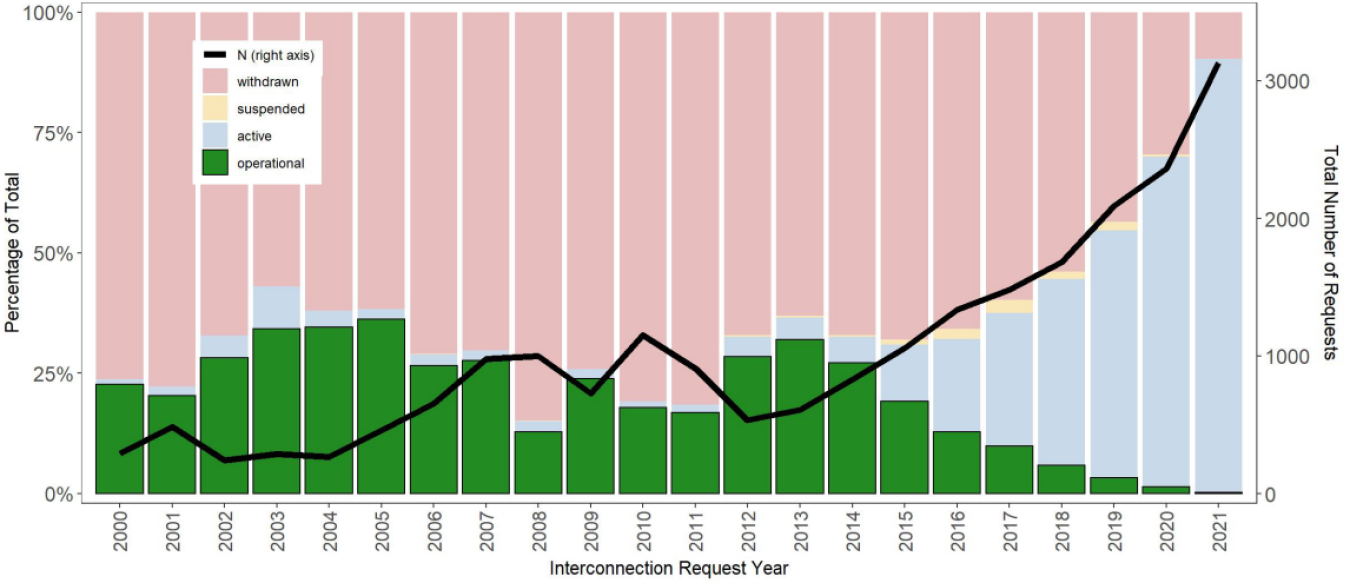Electric transmission system operators (ISOs, RTOs, or utilities) require projects seeking to connect to the grid to undergo a series of impact studies before they can be built. This process establishes what new transmission equipment or upgrades may be needed before a project can connect to the system and assigns the costs of that equipment. The lists of projects in this process are known as “interconnection queues”. The amount of new electric capacity in these queues is growing dramatically, with over 1,400 gigawatts (GW) of total generation and storage capacity now seeking connection to the grid (over 90% of which is for zero-carbon resources like solar, wind, and battery storage). However, most projects that apply for interconnection are ultimately withdrawn, and those that are built are taking longer on average to complete the required studies and become operational. Data from these queues nonetheless provide a general indicator for mid-term trends in developer interest.
This annually updated briefing and data file compiles and analyzes interconnection queue data from all seven ISOs/RTOs in concert with 35 non-ISO utilities, representing over 85% of the total U.S. electricity load. We include all "active" projects in these generation interconnection queues through the end of 2021, as well as data on "operational" and "withdrawn" projects where those data are available.


